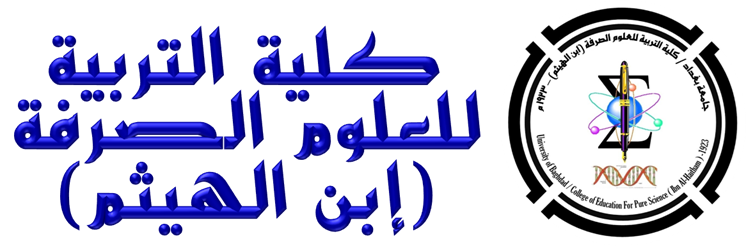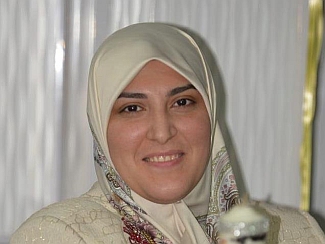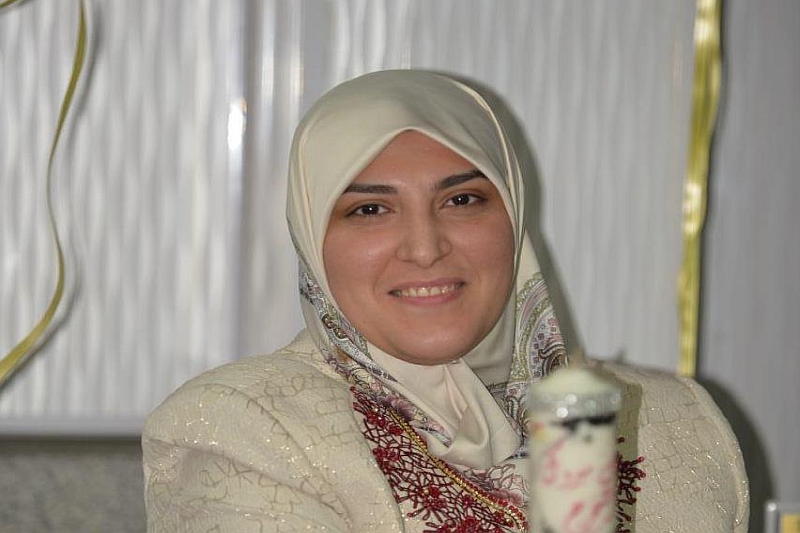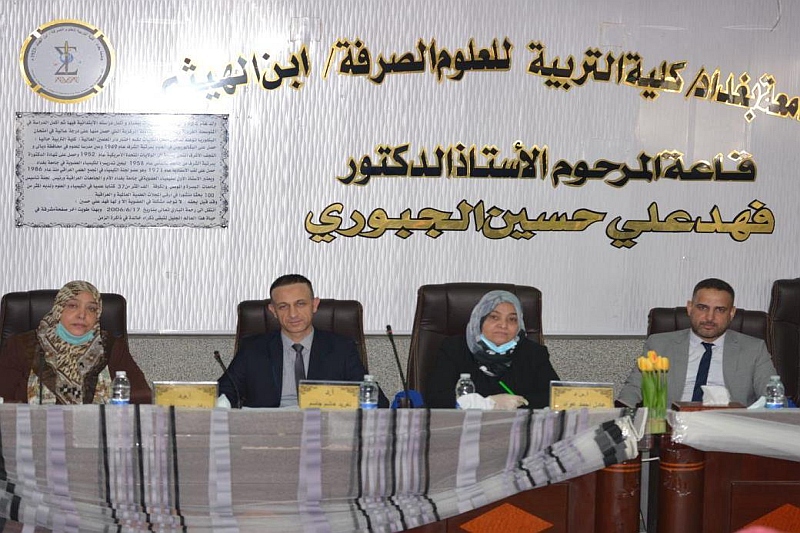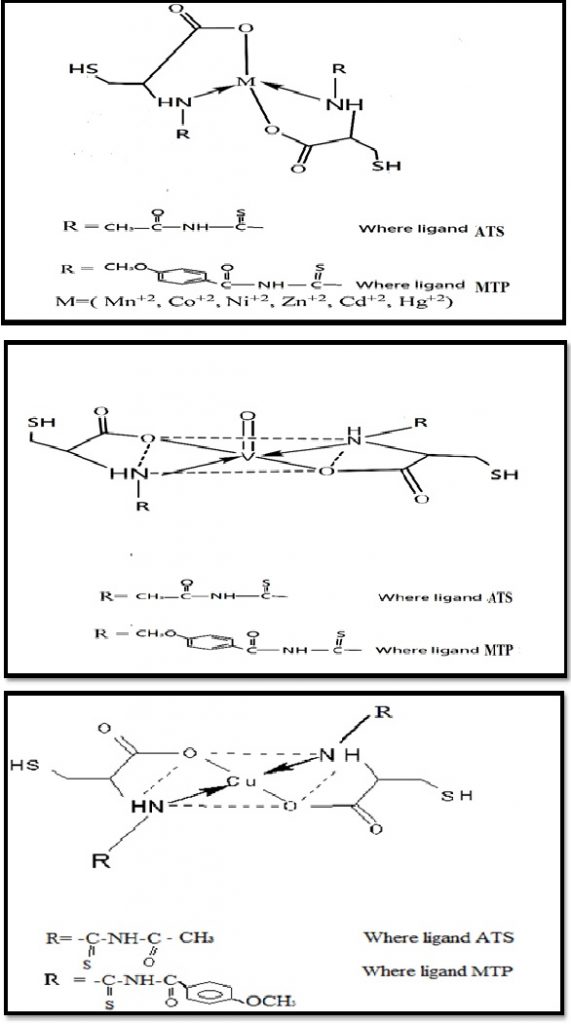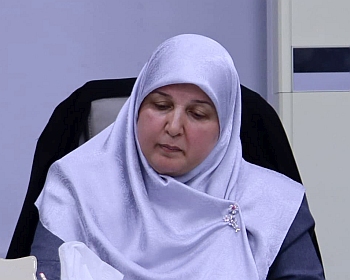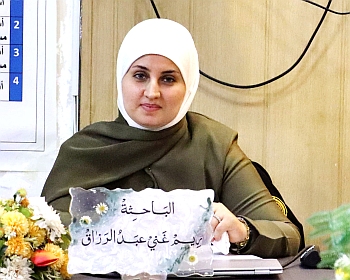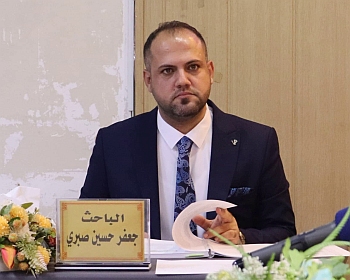ناقش قسم الكيمياء في كلية التربية للعلوم الصرفة (ابن الهيثم) رسالة الماجستير الموسومة ( تحضير وتشخيص بعض المعقدات الفلزية مع ليكندات جديدة مشتقة من الحامض الأمينيL- Cysteine ودراسة النشاط البيولوجي ) للطالبة (ابرار ثامر عبدالله يعقوب ) التي انجزتها تحت اشراف التدريسية في القسم (ا.د باسمه محسن سرحان ) ونوقشت من قبل لجنة المناقشة التي تألفت من الاعضاء المبينة اسمائهم فيما يأتي :
ا.د. تغريد هاشم جاسم النور (رئيسا)
ا.م.د. رياض محمود احمد (عضوا)
ا.م.د. عادل احمد عواد (عضوا)
ا.د. باسمه محسن سرحان (عضوا ومشرفا)
ويهدف البحث الى :
-
تحضير اثنين من الليكندات (ATS) و (MTP) عن طريق تفاعل (اسيتل كلوريد) و (4-ميثوكسي بنزويل كلوريد)
وثيوسيانات الأمونيوم مع سيستينL-
-
تخليق المركبات المعدنية عن طريق تفاعل الروابط المحضرة مع أيونات المعادن (M + 2 = VOو Mn و Co و Ni و Cu و Zn و Cd و Hg).
-
تشخيص تراكيب الليكنديين المعدة بشكل مختلف تقنيات مثل (FT-IR و UV-Vis و H1 و CNMR 13 والأطياف الجزئية و تحليل (C.H.N.S).
-
تشخيص هياكل كافة المجمعات المعدة باستخدام الأشعة فوق البنفسجية ، الموصلية المولية ، الامتصاص الذري للهب ، القابلية المغناطيسية القياسات والتحليل الجزئي للعناصر (C.H.N.S) لبعض المعادن المجمعات ، واقترحوا الهيكل الهندسي المناسب بناءً على تلك البيانات.
-
دراسة النشاط البيولوجي لليكنديين ومجمعاتهما باثنين أنواع بكتيريا (Staphylococcus aureu) و (Escherichia coli) مع نوع واحد أيضًا نوع الفطريات (Candida albicance).
في هذا البحث تم تحضير وتشخيص مشتقين جديدين للحامض الاميني L-cysteine مع معقداتهما الفلزية وكما يلي:-
الليكاند الاول -3)-2), (L1)اسيتايل ثايويوريدو-3-(سولفوهيدريل بروبانويك ) وتم اعطاءه الرمز (ATS) ,حيث تم تحضير هذا المشتق من مفاعلة acetyl chloride مع محلول ammonium thiocyanate في الاسيتون وبعد ذلك تم مفاعلة ناتج المحلول السابق مع محلول L-cysteine في الاسيتون كمذيب مع التصعيد لمدة 6ساعات .
الليكاند الثاني) (L2) 3-سولفوهيدريل-2-(3-(4-ميثوكسي بنزويل)ثايويوريدو)بروبانويك) وقد تم اعطاءة المختصرMTP)) ,وحضر المشتق الثاني من مفاعلة 4-methoxy benzoyl chlorid مع محلول ammonium thiocyanate في الاسيتون ومن ثم مفاعلة ناتج التفاعل السابق مع محلول L-cysteine في الاسيتون كمذيب مع التصعيد لمدة 6ساعات.
كلا الليكاندين (ATS) )MTP),) تم تشخيصهما بواسطة اطياف الأشعة تحت الحمراء (FT-IR) ,اشعة الرنين النووي المغناطيس 13 C-NMR)و ,( 1H التحليل الدقيق للعناصر (C.H.N.S) والاطياف الالكترونية, (UV-Vis) ومن تلك النتائج تم استنتاج الصيغ الكيميائية للمركبين وكما يلي:-
C6H10N2O3S2 = ATS
C12H14N2O4S2 = MTP
كما تم مفاعلة الليكاندين مع عدد من ايونات الاملاح الفلزية مثل VO+2,Mn+2,Co+2,Ni+2 ) (Cu+2,Zn+2,Cd+2,Hg+2 لتحضير عدد من المعقدات والتي شخصت بواسطة قياس الذوبانية, درجات الانصهار والتفكك , اطياف الأشعة تحت الحمراء, الاطياف الالكترونية, التوصيلية المولارية, الحساسية المغناطيسية, والتحليل الدقيق للعناصر(C.H.N.S) لبعض المعقدات وتعيين نسبة الفلز في معقداته بواسطه تقنية الامتصاص الذري.
ومن خلال نتائج تلك القياسات تم استنتاج الشكل رباعي السطوح لكل من معقدات الايونات (Mn+2 , Co+2, Ni+2, Zn+2, Cd+2, Hg+2) بينما معقدات ايون النحاس (Cu+2) فأخذت شكل المربع المستوي, وشكل الهرم مربع القاعدة لمعقدات ايون الفناديل(VO+2 ) كما تم دراسة الفعالية البيولوجية لكلا الليكاندين مع معقداتهما مع نوعين من البكتريا (Escherichia coli) و (Staphylococcus aurea) ونوع واحد من الفطريات ( Candida albicance) وقد اعطت المركبات نتائج مختلفة في تثبيط نموها.
وخلصت الطالبة الى التوصيات
1- تحضير معقدات تحتوي على مشتقات ليجاند جديدة مختلفة من السيستين والأحماض الأمينية الأخرى
2- استخدم الأيونات المعدنية من السلسلة الثانية والثالثة أو اللانثانيدات والأكتينيدات مع هذه الروابط لتحضير معقدات جديدة.
3- دراسة ثبات الاستقرار للرابطتين ومجمعاتهما وحساب العوامل الديناميكية الحرارية ∆H و S∆.
4- دراسة التطبيق الصناعي لهذه المركبات.
5- استخدام مجموعات أنواع مختلفة من البكتيريا والفطريات لاختبار النشاط البيولوجي لهذه المركبات.
Synthesis and characterization of some metal complexes with new ligands derived L-cysteine amino acid and study biological activity
Abrar Thamer Abduallah
Prof. Dr. Basima M. Sarhan
Aim of the work
-
Synthesis of two ligands (ATS) and (MTP) by the reaction of the (Acetyl chloride) and (4-Mithoxybenzoyl chloride) and ammonium thiocyanat with L-Cysteine
-
Synthesis of the metal complexes by the reaction of the prepared ligands with metal ions (M+2 =VO, Mn, Co, Ni, Cu, Zn, Cd and Hg)
-
Characterization the structures of the two prepared ligands by different techniques like (FT-IR, UV-Vis, 1H,13C NMR spectra, and micro elemental analysis (C.H.N.S)
-
Characterizing the structures of all the prepared complexes using (FT-IR and U.V-Vis, molar conductance, flame atomic absorption, magnetic susceptibility measurements and micro-elemental analysis (C.H.N.S) for some metal complexes, and proposed the suitable geometrical structure depending on that data.
-
Studying biological activity of the two ligands and their complexes with two types of bacteria (Staphylococcus aureu) and (Escherichia coli), also with one type of fungi Candida albicance
